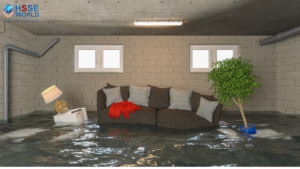E-Books: Live Fire Training: Principles and Practice
5 min readLive Fire Training: Principles and Practice to NFPA 1403, provides a definitive guide on how to ensure safe and realistic live-fire training for both students and instructors.
All firefighters need the safe and controlled “real-life” training offered through live-fire exercises in order to be fully prepared for the hazards of the foreground. Live Fire Training: Principles and Practice to NFPA 1403, provides a definitive guide on how to ensure safe and realistic live-fire training for both students and instructors. Updated to address all the requirements for NFPA 1403, Standard on Live Fire Training Evolutions, 2018 Edition, this essential resource covers everything from Fire Fighter Physiology, Critical Incident Planning to Gas-Fired, Non-Gas-Fired Structures to Non-Structural Props.
This textbook is dedicated to Elias “Buck” Tomlinson and all of the live fire training instructors who teach their students to perform safely in all conditions.
You are the live fire training instructor : your chief has asked you to set up a live fire training evolution using an acquired structure. The two closest fire departments that run mutual aid with you have been invited to participate.
The acquired structure must be burnt within seven days. Your department is relatively small with 20 certified firefighters and 2 engines. The acquired structure has been damaged by a previous
fire, which your department contained to one room.
When you talk to mutual aid companies, they are eager to participate, however, some of their personnel are in the middle of training and are not yet certified. They are also not sure what

apparatus they can provide. From previous experiences with the department, you have had concerns regarding their personal protective equipment not fitting properly and being worn out. As you consider the possibility of conducting this live fire training evolution, there are many questions that must be answered. Some of these require knowledge of other NFPA standards.
- Does the gear meet the standards for firefighting?
- Will there be enough resources to provide an adequate water source to conduct the live fire training?
- Do the participants have the amount of training needed to participate in the live fire training evolution?
- Is there enough time to adequately prepare for this live fire training evolution?
- Are there enough live fire training instructors and safety officers?

Whether you are a career fire fighter, a volunteer fire fighter, a company officer, an instructor, a training officer, or a chief officer, as an instructor conducting live fire training exercises, you are responsible for the safety of all participants involved.
Fire fighters and students learning to become fire fighters have died or have been severely injured during training evolutions. Achieving a balance between participant safety and training effectiveness can be a difficult task.
There are thoroughly written standards that relate to the requirements of conducting live fire training evolutions. The National Fire Protection Association (NFPA) has published one of the most popular of these standards, NFPA 1403, Standard on Live Fire Training Evolutions. The purpose of NFPA 1403 is to provide a process for conducting live fire training evolutions to ensure that they are conducted in safe facilities and that the exposure to health and safety hazards for the fire fighters receiving the live fire training is minimized. NFPA 1403 was designed to set standards on what should be done to mitigate the inherently dangerous conditions of live fire training. The purpose of this text, however, is to go beyond those written standards and to focus on the how-
to aspects of conducting valuable live fire
Contents
The Contents of Live Fire Training: Principles and Practice
- Introduction to Live Fire Training. 2
- Critical Incident Planning. 24
- Preparation and Training of Instructors. 38
- Fire Fighter Physiology. 54
- Planning for Live Fire Training. 76
- Acquired Structures. 98
- Gas-Fired and Non-Gas-Fired Structures. 124
- Nonstructural Training Props. 152
- Live Fire Training Evolutions. 176
- Appendix A: An Extract From NFPA® 1403, Standard on Live Fire Training Evolutions, 2012 Edition. 188
- Appendix B: NFPA® 1403 Correlation Guide. 197
- Appendix C: Acquired Structure Live Fire Training Model SOP. 200
- Appendix D: Permanent Structure Live Fire Training Model SOP. 228
- Appendix E: Permanent Structure Live Fire Training Burn Plan for __ Fire Training Center. 235
- Appendix F: NFPA 1403, Standard on Live Fire Training Evolutions, Crosswalk from 2007 Edition to 2012 Edition. 243
- Glossary. 246
- Index. 248
- Credits. 252
Download the book
Live Fire Training: Principles and Practice
More Downloads
- E-Books: Healthcare Hazard Control & Safety Management
- E-Books: Safety, Health and Working Conditions Training Manual
- E-Books: Energy Efficiency in Water and Wastewater Facilities
- E-Books: Fire Service Features of Buildings and Fire Protection Systems
- E-Books: Evaluation of Fire Safety free download
- E-Books: PPE for Chemical, Biological, and Radiological Hazards free
- E-Books: Changing the Workplace Safety Culture free download
- E-Books: Site Emergency Planning Workbook
- E-Books: Load Restraint Guide
- E-Books: Essential Practices for Creating, Strengthening, and Sustaining Process Safety Culture
- E-Books: System Safety Engineering and Risk Assessment
- E-Books: Permit-Required Confined Spaces
- E-Books: Is it Safe to Enter Confined Space?
- E-Books: 5-Minute Workplace Safety Talks
- E-Books: Safety Culture and High-Risk Environments
- E-Books: Practical Guide to Industrial Safety
- E-Books: Slip, Trip, and Fall Prevention for Healthcare Workers
- E-Books: Health and Safety at Work Key Terms
- E-Books: Fundamentals of Process Safety Engineering
- E-Books: Gas Detection Hand Book
- E-Books: Occupational health and safety management systems ANSI-AIHA-z10-2012
- E-Books: Hot Work on Drums and Tanks
- E-Books: Human Fatigue Risk Management
- E-Books: Guidelines for the provision of facilities and general safety in the construction industry
- E-Books: Handbook of Training in Mine Rescue and Recovery Operations ( 2021)
- E-Books: Code of Practice for the Safe Use of Lifting Equipment – Edition 9 (Nov 2019)
- E-Books: Free Forklift Health and Safety Best Practices Guideline
- E-Books: Handbook of Hazardous Chemical Properties
- E-Books: Human Performance Improvement through Human Error Prevention
- E-Books: Principles Of Fire Risk Assessment In Buildings
- E-Books: Investigation of Occupational Accidents and Diseases
- E-Books: Radiation Protection and Safety in Industrial Radiography
- E-Books: Basic Guide to System Safety, Third Edition
- E-Books: Food Safety Management-A Practical Guide for the Food Industry
- E-Books: Safety identification: Escape and evacuation plan signs- ISO 23601
- E-Books: Safety at Work
- E-Books: The Safety-Critical Systems Handbook 4th edition
- E-Books: Fundamental principles of occupational health and safety
- E-Books: Fire Safety Risk assessment Guide – Sleeping Accommodation
- E-Books: Mental health at work series
- E-Books: Live Fire Training: Principles and Practice
- E-Books: Pre-Startup Safety Review Guide
- E-Books: Fire and Emergency Drill Manual and Building Inspection Guide
- E-Books: Health and Safety: Risk Management 5th edition
- E-Books: Fire Protection systems -Third edition 2021
- E-Books: Fire Safety Logbook templates
- E-Books: From Accidents to Zero
- E-Books: Electric Safety Practice and Standards
- Your steps to chemical safety
- E-Books: Ergonomics and Psychology Developments in Theory and Practice
- E-Books: HAZOPS Should BE fun-The Stream-Based HAZOP
- E-Books: Safety Health and Environmental Auditing
- E-Books: A Quick Guide to Health and Safety
- E-Books: Occupational Ergonomics A Practical Approach
- E-Books: Job Hazard Analysis A Guide for Voluntary Compliance and Beyond
- E-Books: Electrical Safety of Low Voltage Systems



